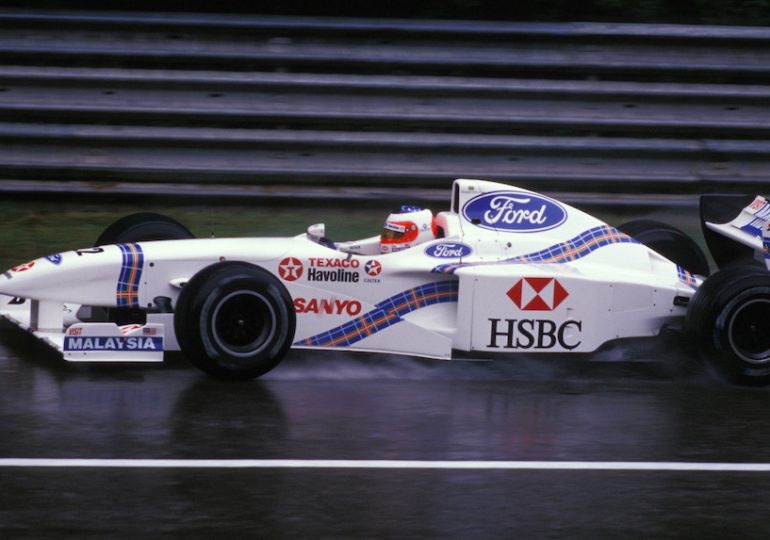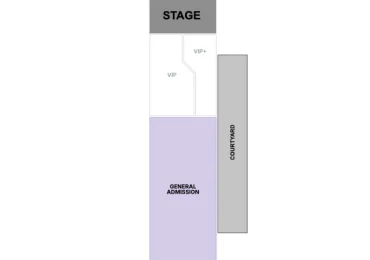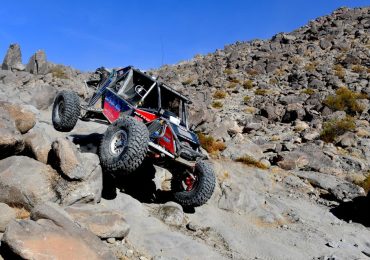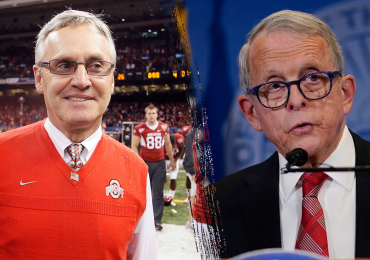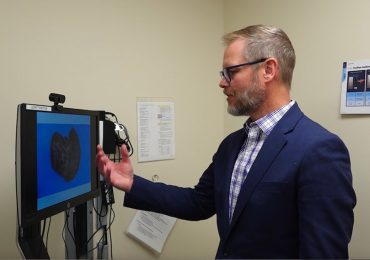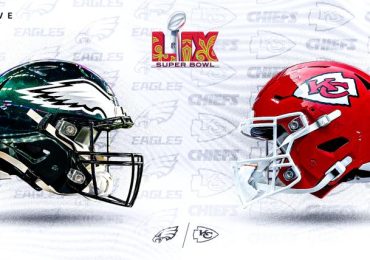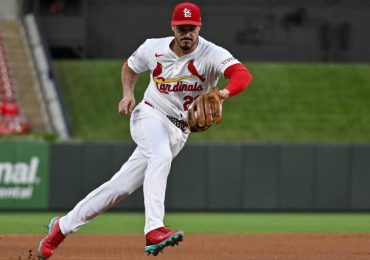The cyclical nature of Formula 1 means there’s never a time when teams are completely focused on the present day. The sport demands future planning, with long lead times for developments, and rules that will constantly change to both try and improve the sporting offering but also ensure it remains a cutting-edge technological challenge that satisfies automotive brands.
Much has been made of General Motors’ attempts to get into F1 with Andretti in recent years – and with good reason – but there have been multiple other discussions and entries at different levels within that time, too.
Audi will be a works team when new regulations are introduced in 2026, and Honda is returning as a full supplier to Aston Martin. But also coming back to the sport at that same time is Ford, having secured a partnership with Red Bull that had looked destined to involve Porsche for a number of months.
“For us we were definitely on that journey of, Formula 1 is the right place to be, it’s how are we going to enter?” global director of Ford Performance motorsports, Mark Rushbrook explains. “And we were talking to different teams, we were thinking about doing our own power unit program independently.
“It became very clear, that at least from what we saw from the outside, that it was not going to work with Porsche for Red Bull. I literally got Christian ’s email address, sent him an email and said, ‘Hey, do you want to talk?’
“And I was on a plane, and I felt maybe 20 minutes into that discussion, ‘OK, there’s the foundation for a partnership here that’s going to work’. And I left that meeting and called Jim Farley, and then it accelerated quickly from there.”
Both Rushbrook and Horner speak about fate being a big part of their partnership, but that overlooks the amount of work that had gone into the respective programs prior to their collaboration starting. Ford had explored multiple entry points, while Red Bull had also looked at every different way it could acquire or manufacture a power unit.
“We went through a process of, it will be far better strategically for us to partner with an OEM, because as an independent manufacturer, you miss out on the advantages that a Ferrari or a Mercedes or a Honda – who changed their mind – technically have,” Horner explains.
“So we went through a process and we concluded that a change in ownership wasn’t the right route for the business. I sat down with Mark, and Ford were exploring a return to Formula 1 and it was like ‘Hey, we’re looking at doing this, this is our plan’ and it happened very, very quickly.
“We had been through six months of discussion with Porsche, it didn’t play out, and I think from start to finish it was literally 12 weeks to signing a contract. Initial discussions with Mark and then Jim Farley and Bill Ford, basically there was a decision by the end of 2022 that this was the route forward.
“We attended a meeting – we went to Dearborn on the way to Brazil – and met with and Bill Ford and Jim, and I thought we were in good shape when Jim walked into the meeting in a Sergio Perez cap! ‘OK we’re looking pretty good here!’
“You could just feel there was a real enthusiasm from the very top of the company, from Bill Ford who was so enthusiastic about coming back into Formula 1, Jim who’s a racer himself, and it was like ‘We don’t want to tell you guys how to do your business but we want this to be a real partnership’, and it was a very, very straightforward negotiation from that point forward.”
A big part of what made the talks so straightforward was the clarity Red Bull had in what it wanted. Red Bull Powertrains (RBPT) was being established at its Milton Keynes campus, and it was recruiting from multiple other power unit suppliers, with a desire to have a manufacturer support it whenever it had the need.
Now, the facility is up and running, and is an impressive set-up that has been designed largely from scratch by experienced personnel. The first iteration of the internal combustion engine sits proudly on display – the first fire-up came roughly eight months after breaking ground – close to the entrance, but beyond that Red Bull has already run out of space and is expanding for the Energy Recovery System department.
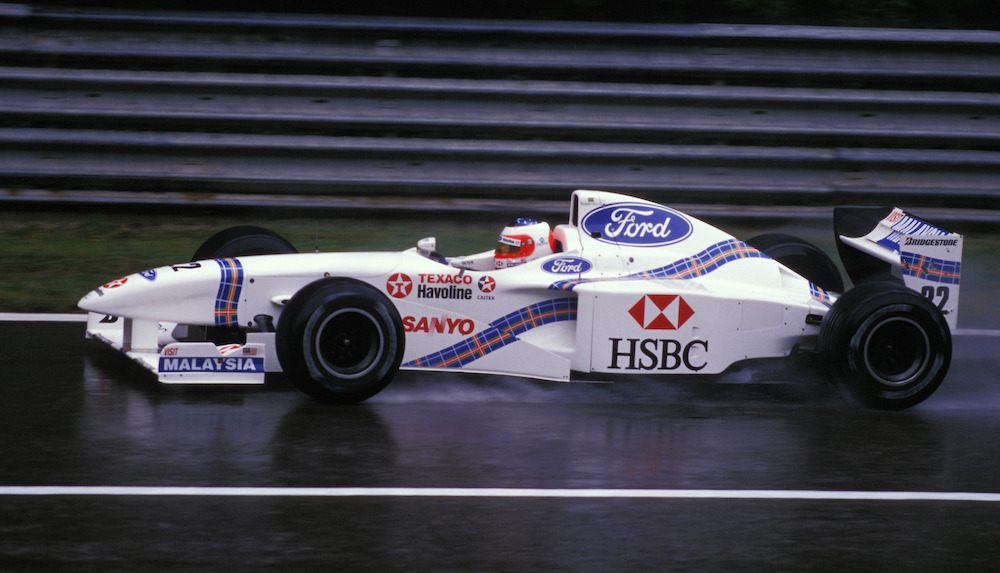 There’s already some Ford DNA in the Red Bull bloodline if you go far enough back: Ford essentially underwrote the Stewart F1 team (above) and bought the team outright in 1999, rebranding it as Jaguar Racing. It continued to use Ford-Cosworth factory engines until Ford pulled out in 2004, and the team became Red Bull in 2005. (Red Bull kept the Cosworth engines for its first season). Ercole Colombo/Studio Colombo/Motorsport Images
There’s already some Ford DNA in the Red Bull bloodline if you go far enough back: Ford essentially underwrote the Stewart F1 team (above) and bought the team outright in 1999, rebranding it as Jaguar Racing. It continued to use Ford-Cosworth factory engines until Ford pulled out in 2004, and the team became Red Bull in 2005. (Red Bull kept the Cosworth engines for its first season). Ercole Colombo/Studio Colombo/Motorsport Images
On a recent tour for select media including RACER, Ford Performance’s motorsports powertrain manager Christian Hertrich admitted the ability to put so many key departments within a matter of steps of each other – when the reality at Dearborn was usually a drive across town – made a big impression to Ford.
Now, the Ford badge is on the outside of the building itself, but accusations that this is simply a badging exercise continue to get short shrift from Rushbrook. Aside from offering input into the electrification side of the power unit, or the turbocharger technology, Ford was able to supply simulation tools and engineers while RBPT was being set up, but will also take learnings back into the wider company.
“Our pillars are why are we in motorsports? It’s innovation and tech transfer,” Rushbrook explains. “And we want it to be two way: from road to race – which we’ve got the opportunity to do that – and certainly from race back to road – again, the opportunity to do that.
“It’s the marketing benefit from being in with such a great partner, and in a great sport, to be able to tell that story about our company, our people our culture. But it’s also people development.
“So a lot of our engineers are in motorsports maybe forever, for their career, but a lot of them are in motorsports for X number of years, and then they go into the rest of the company. So it’s that sense of urgency, that pace, that discipline of hitting milestones, and delivering at a very high level consistently.”
There are plenty more milestones to hit between now and the first time a RBPT power unit hits the track in 2026, but “delivering at a very high level” is something that is non-negotiable on both sides. Red Bull has become accustomed to winning and took on the project to try and give itself the best chance of continuing that, with keen eyes paying attention to the development of the new facility and the work going on inside.
“Max , we took him round about a month ago and just showed him where we were from a progress point of view,” Horner says. “We keep them informed, and every time he comes round he sees a difference or sees more engines running or more progress.
“He’s part of that journey and I think it actually quite excites him, he shows a huge amount of interest in the development that’s going on. I think it almost goes back to his karting days and the engine tuning at that time.
“I think it just gives him confidence to see the scale of the effort and the scale of the investment. It’s the single biggest investment that Red Bull has ever made in motorsport, and together with Ford we have to succeed.
“We can’t afford for this project not to succeed, and I think for us strategically with where we are on our journey as a group, as a team, with this alliance and this powertrain change in regulations is the perfect juncture to take everything under control and all the benefits that come from that, having everything on the same campus.”
That final point is one that is viewed as critical in Horner’s eyes, putting Red Bull alongside Ferrari as the only team to have such a set-up, given Mercedes being split between the F1 team in Brackley and High Performance Powertrains (HPP) around 25 miles away in Brixworth.
It’s a huge investment – potentially the biggest in a UK-based engine project in the past 40 years, according to Horner – and one that has led to an impressive team headquarters in Milton Keynes. But there will be nothing impressive about it if the power unit isn’t competitive, and as positively as both sides speak right now about the work done together so far, that collaboration needs to remain fruitful in the face of so many unknowns when it comes to the work being done by rivals.
“There’s just the usual challenges,” he says. “I think the biggest challenge for us as a new organization is our processes are maturing, and we’re learning every week. But we’re pushing very, very aggressively. And if I chart our performance, is on target. Durability is on target where we would hope to be at this stage.
“Is it enough? Who knows, I don’t know what the others targets are. But at the moment, every key milestone for us, the team are hitting.”

